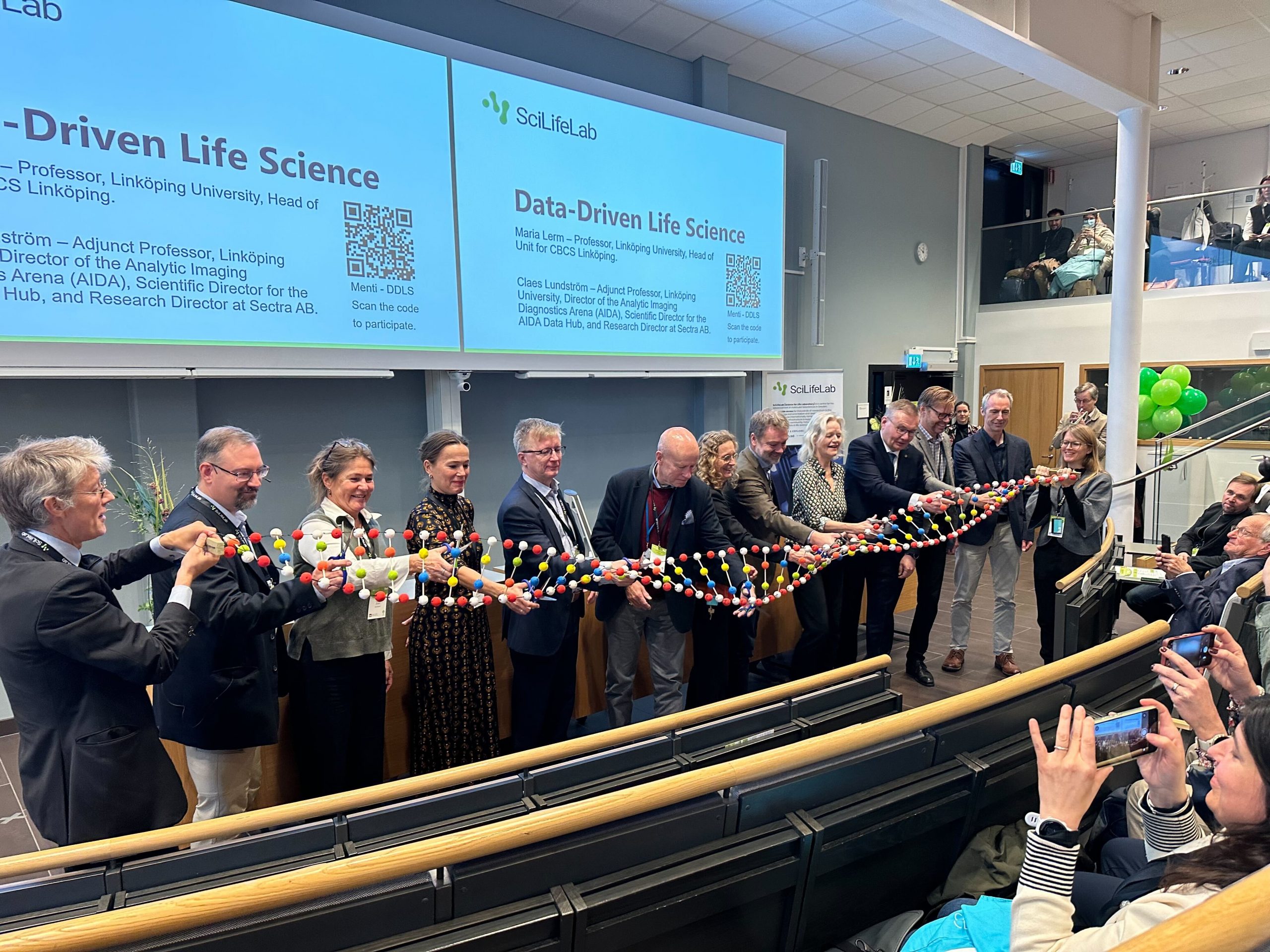SciLifeLab Day Linköping – a tribute to research infrastructure and translational science
On October 10, SciLifeLab Linköping hosted a full-day scientific event to celebrate science, highlight research infrastructure, and inaugurate the SciLifeLab Linköping site. Fredrik Elinder, Site Director, SciLifeLab Linköping welcomed the 280 delegates to Linköping and the inauguration of a day filled with seminar presentations, poster exhibition, and a snapshot of research and technological possibilities in local and national research infrastructures as well as examples of collaborations between healthcare and academia.
“I think this day can put the spotlight on SciLifeLab so that people realize what SciLifeLab is, and then they can try to find a solution to their problems,” said Fredrik Elinder.
The morning session kicked off with a session focusing on research infrastructure with speakers from Linköping University, Region Östergötland, SciLifeLab director Olli Kallioniemi and Infrastructure Director Annika Jenmalm Jensen, flash talks from nine of SciLifeLab’s technology platforms, as well as the SciLifeLab & Wallenberg National Program for Data-Driven Life Science (DDLS).
“To succeed, basic research and clinical science need to work together. This year’s Nobel Prize in Physiology or Medicine is a good example of how basic science can contribute to solving societal challenges” said Mats Ulfendahl, Director of Research, Region Östergötland, and continued “I believe it is extremely important that clinical research make use of approaches that are being developed in basic science, and in bringing them together”.
Olle Stendahl, Professor Emeritus in Medical Microbiology, and formerly secretary of the Medical Research Council also reflected on the 2023 Nobel Prize in Physiology or Medicine awarded to Katalin Karikó and Drew Weissman for their discoveries that enabled the development of effective mRNA vaccines against Covid-19” and related that to similar research environmental components present that allowed for the 1953 discovery of the double helix:
”Talent, a collaborative milieu, and open discussing and sharing of data; when all of those components are present, the solution comes quickly. We can see the same thing from this year’s Nobel Prize; we did not get a vaccine in a year or two – it took 70 years! But when all components were in place, the applied solution came rather quickly” said Olle Stendahl.
Olle Stendahl reflected further on research infrastructure funding over time and SciLifeLab’s role as a national research infrastructure.
“In 1998, The Medical Research Council invested 18 MSEK in research infrastructure. This is to be compared to the 2022 investment from the Swedish Research Council of 2,8 billion SEK for infrastructure funding. SciLifeLab is not only an infrastructure but also a knowledge hub for basic and applied research for researchers in Sweden and internationally” Olle Stendahl concluded.
The SciLifeLab Linköping site was inaugurated by cutting a model of a DNA double helix, and a fanfare was performed on a trumpet by Anders Fridberger, Deputy Dean of Linköping University’s Faculty of Medicine and Health Sciences. Thereafter, Fredrik Elinder and Josefine Sandström, Site Director and Site Coordinator of SciLifeLab Linköping received a sign with the SciLifeLab logotype.
As forensic science is one of Linköping University’s strategic research areas, the day highlighted the joint venture between the National Board of Forensic Medicine in Sweden and Linköping University. State-of-the-art technologies within forensics were presented through a talk titled Solving murders with the use of investigative genetic genealogy and good collaboration where Andreas Tillmar, Forensics Geneticist, National Board of Forensic Medicine and Docent and Adjunct Senior Lecturer, Linköping University and Siri Aili Fagerholm, Senior Forensic Expert, Swedish National Forensic Centre gave an overview of technologies as well as a crime case where the use of investigative genetic genealogy (IGG) in the Linköping double murder case from 2004 that was solved in 2020.
“Solving the case was a true team effort with competence from the Swedish Police Authority, the National Board of Forensic Medicine, SciLifeLab, FamilyTreeDNA, genealogists and the Swedish Prosecution Authority. The successful use of investigative genetic genealogy in this case has led to a review of the legal grounds as well as a proposed revision of Swedish law” said Siri Aili Fagerholm.
The day was wrapped up with parallel sessions focusing on SciLifeLab’s three capabilities; Pandemic Laboratory Preparedness; Precision Medicine and Planetary Biology, where the audience got a glimpse of local examples focusing on how these global challenges are addressed through collaborative efforts with researchers and infrastructures for life science.





